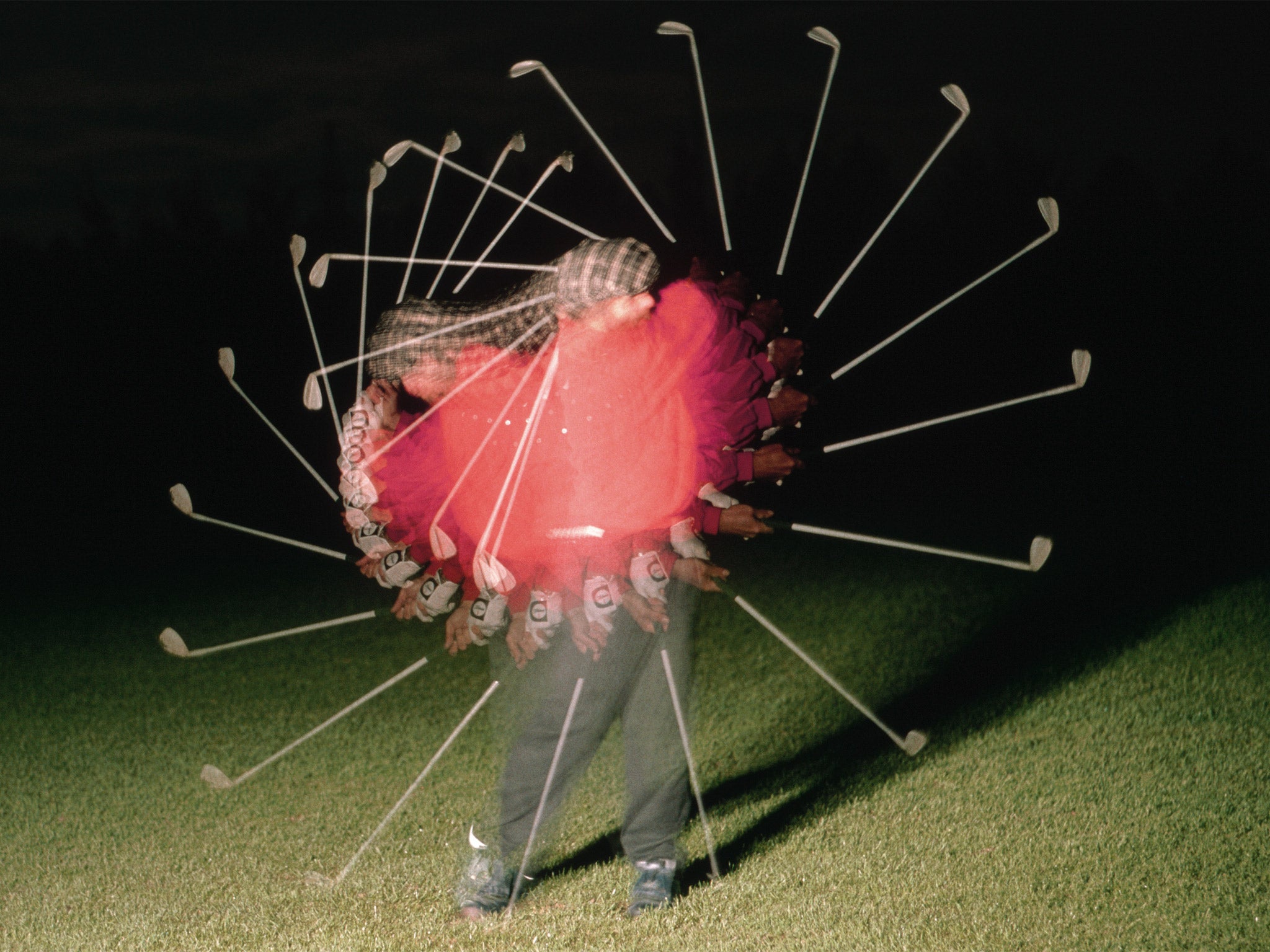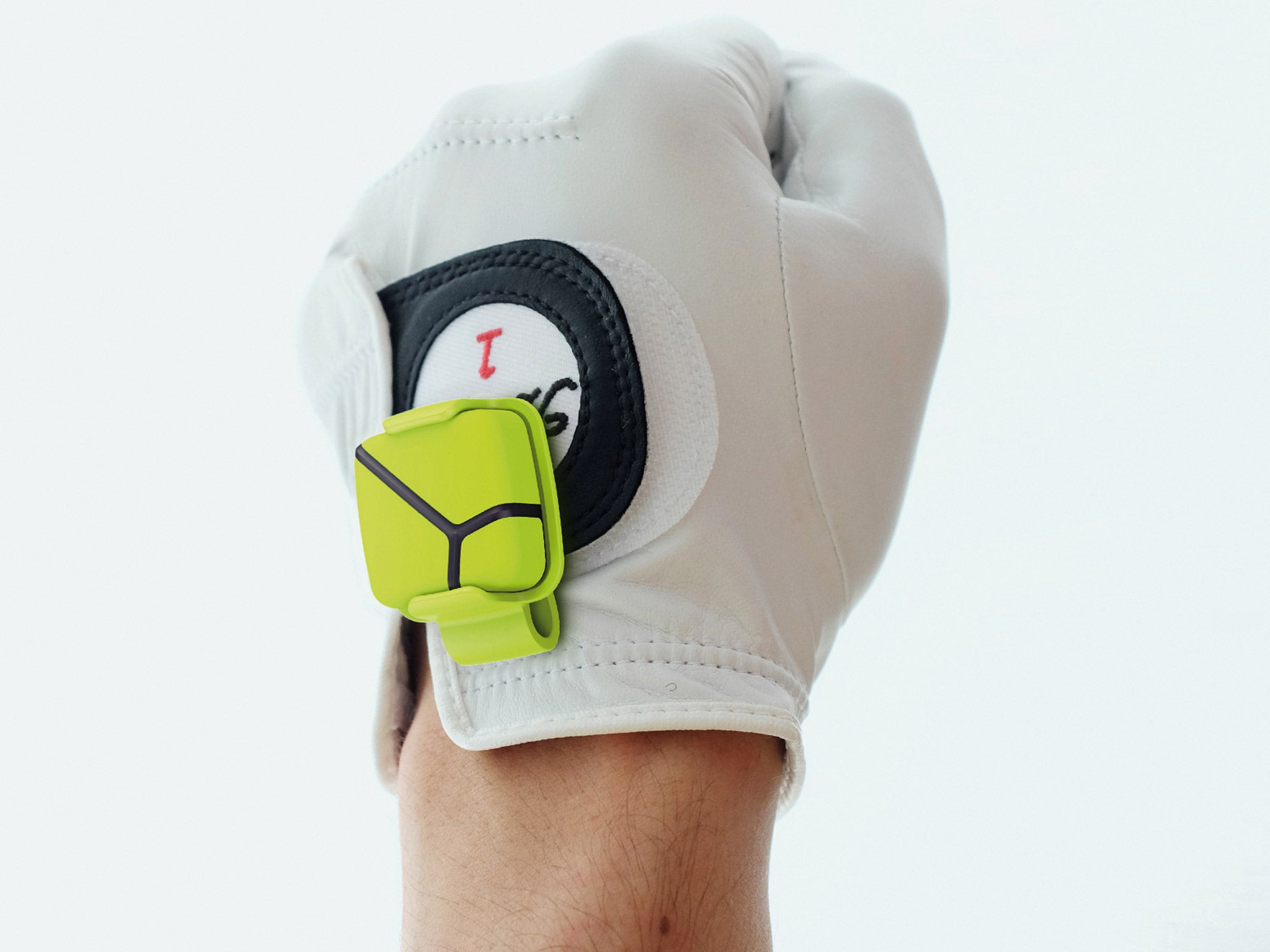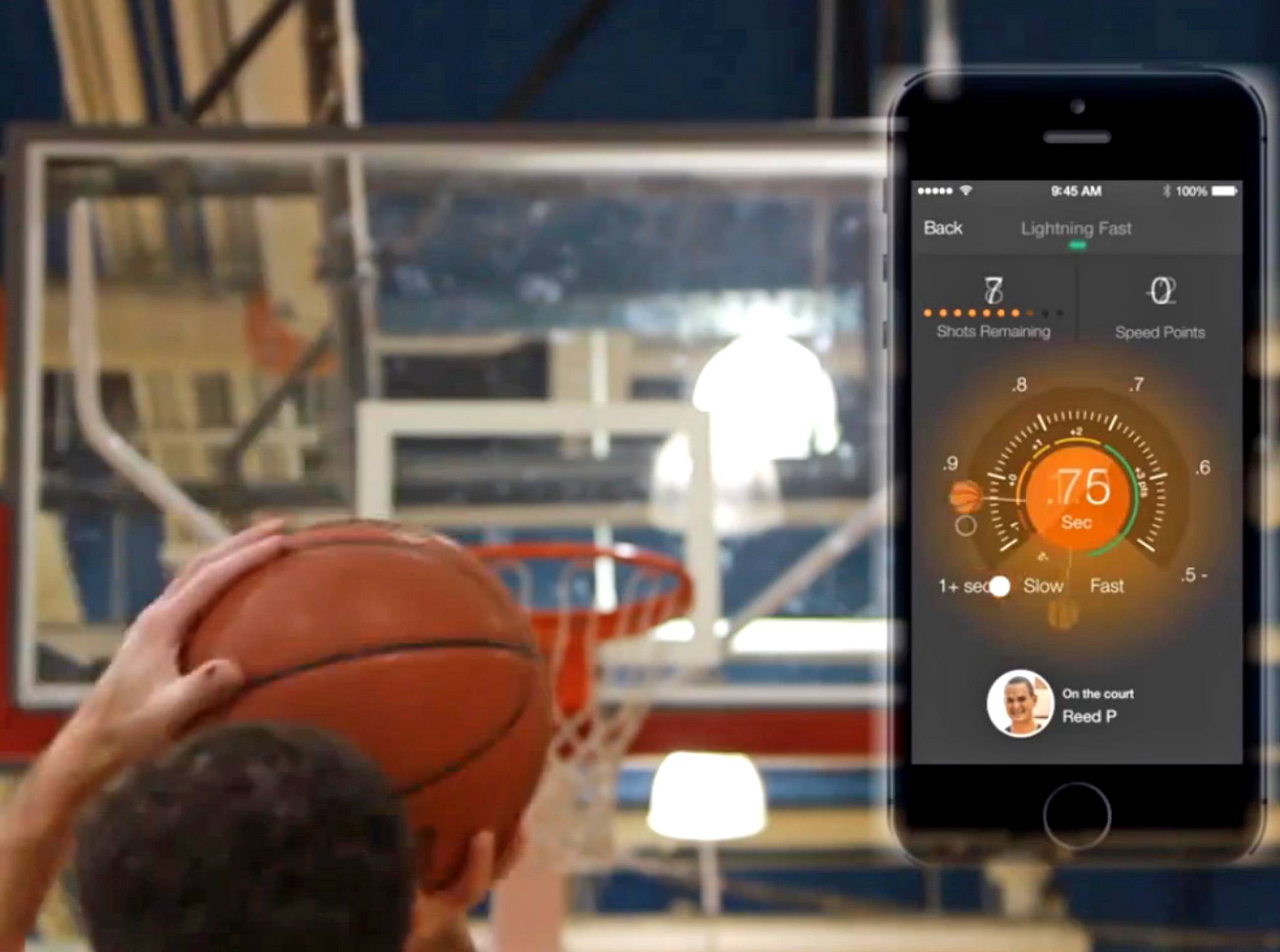The Independent's journalism is supported by our readers. When you purchase through links on our site, we may earn commission.
Can smart golf gloves, hi-tech racquets and Bluetooth basketballs really improve your golf?
A host of new gadgets are promising to improve amateur athletes' sporting prowess. Seth Stevenson puts them through their paces

I've made peace with the notion that I'll never beat Rafa in straight sets on the Roland Garros clay at the French Open. I'll forever be a sad-to-middling weekend athlete. And yet I like to imagine that I still have potential for improvement.
I'm not alone. There are millions of plodding, athletically challenged, wannabe jocks out there scouring YouTube for coaching tips, enrolling in lessons from local pros, and buying bizarre and, frankly, embarrassing instructional aids.
The latest trend in sporty self-improvement: sensors that analyse your physical form and give you instant feedback. A wave of new consumer devices – packed with teensy accelerometers, gyroscopes and Bluetooth transmitters – promises to track the speed of your golf swing, the shape of your tennis stroke, and the backspin on your jump shot.
I tested out a few of these products to see if they'd boost my skills. Could technology help me morph into a beast in my weekly hoops game? Give me the skills to crush my regular tennis partner? Shave precious strokes off my disappointing golf scores?
One must acknowledge a fundamental weakness with these sports sensors: simply knowing, say, how fast you swing your 7-iron does not at all translate into hitting a golf ball straight and true. Improving in an athletic endeavour requires a collection of tiny, subtle adjustments. Tweaks to your stance, rhythm, balance, alignment, fluidity. Only a trained eye will be able to watch the whole motion and identify its weak link.
Still, while they won't immediately win you an ad campaign with Santander, some of these sensor products do offer useful functions. Here are my rankings on sports gadgets, ordered from worst to first:
Babolat Pure Drive Play tennis racquet
$399 (£241), babolat.com (ships to UK)
There's something pleasingly sci-fi about a tennis racquet with a mini-USB port hidden in its handle. Pop open the Babolat's butt cap and it's hard not to feel you're peering into the future of sports. The promise is obvious: play a set or two, plug the racquet into your laptop, and download an instant, detailed analysis of your performance. I couldn't wait to take this thing out for a spin. Sadly, the reality was far less fun. Despite repeated efforts, I couldn't get this thing to work. Scads of online reviews confirmed my suspicions: the Babolat is buggy. Though my computer recognised the racquet, it failed to locate any data from my on-court sessions. I called up Babolat, which acknowledged the bug, promised me it is working on a long-term fix, and gave me instructions for a short-term workaround. I followed those instructions closely, yet the racquet still failed.
Even if the Babolat had performed smoothly, I see a core problem with its model. What if you prefer a racquet with a larger or smaller head size? What if you'd like to be able to swap in, mid-set, a backup racquet with a different string tension? Or what if, heaven forbid, you break a string? Because the sensor is buried within the handle, and the handle is non-transferable, you're forced to play with this particular racquet if you wish to record your data.
Zepp golf and tennis sensor
£99.95, amazon.co.uk
The Zepp can be used – in tandem with various mounting accessories – to analyse a tennis shot or a golf stroke. I first tried it out with tennis. It slips into a rubbery housing that stretches over the butt of any racquet, even a cheap one. The sensor doesn't get in the way of your grip, so I soon forgot it was there. Unlike the Babolat Play, the Zepp managed to give me some actual results. I easily paired it with my phone using Bluetooth. The Zepp tennis app immediately downloaded a snapshot of the set I'd played against a pal.
There were interesting nuggets in the data. The Zepp tallied 254 shots over the hour I was on the court, of which 58 per cent were forehands and 35 per cent were backhands. It showed that I struck my groundstrokes with consistent power over the course of the set, while my serve lost oomph as I got tired toward the end and my shoulder grew grumpy.

But I wasn't convinced the portrait being painted was totally accurate. The Zepp told me that 47 per cent of my forehands were sliced, which couldn't be right – I know I hit all but a few of these strokes either flat or with topspin. More damning, it claimed I hit a total of only 16 serves over the course of the entire set, which is simply impossible. I hit nearly that many in a single long game that featured multiple deuces. When I asked Zepp about this issue, the company acknowledged the flaw and said it's working on better serve recognition.
Even if this data were sound, I'm not sure how useful it would be. OK, let's say I really did hit 58 per cent forehands. Does that mean I'm stepping around my backhands to avoid them? Or does it just mean that my right-handed opponent was hitting mostly cross-court?
Over at the driving range, I slipped the Zepp into a mount that lets you affix it to your golf glove. Then I hit a slew of balls, alternating between a driver and a 7-iron. The sensor tells you your club speed (mine ranged from 77mph up to 103mph as I cycled through differing levels of frustration and physical anger) and compares the tempo of your backswing to your follow.
It also creates a beautiful animation of your swing, which you can rotate to view from different angles. This was the most intriguing feedback for me, as it let me compare the plane of my swing to the ideal plane that Zepp suggests. According to the sensor, I swing too low and should get more vertical.
Perhaps a seasoned golfer with good form and self-knowledge could use the Zepp to experiment with nuanced adjustments. But for a duffer like me (personal best round: 106), the Zepp's feedback was like sparks thrown on damp kindling. I didn't know how to use its suggestions, and I wanted the help of a golf pro to spot basic flaws in my form.

3Bays GSA Pro
£199 from 3baysgsa.com
This slick little sensor plugs into the hole in the handle of all standard golf clubs. It didn't interfere with my grip. And to me, mounting the device to a fixed spot on the club seemed likely to offer more consistent results than the Zepp approach, in which you wear the sensor on your hand and then tell the device the approximate angle of your grip.
I loved the ability to follow through on a drive, step over to my phone, and immediately watch my swing recreated in vivid animation – with stats on my club head speed, impact force, tempo, and so forth. The GSA Pro seemed trustworthy: when I purposely sped up or slowed down my swing, or changed its arc, the device recognised the difference. My favourite feature: the sensor informed me I was almost always hitting the ball with the club face too open and that my swing path was too outside the ball. This is genuinely useful and actionable knowledge.
94Fifty Smart Sensor basketball
$249.95 (£151), shop.94fifty.com (ships to UK)
I had very high hopes for the 94Fifty, which embeds sensor technology and a Bluetooth transmitter inside a standard basketball. The ball can measure how fast you dribble, how hard you dribble, how quickly you release a shot after receiving a pass, the arc of that shot, and the backspin on the ball each time you shoot it. You can't use the 94Fifty during a game (the ball won't know which player did what, and it can't automatically switch between analysing ball handling and shooting), but the accompanying app is perfectly designed to lead you through individual drills. I tried it out with some friends before our weekly Wednesday evening game.
The sensor seems highly accurate, as best I could tell. It tallied my dribbles, told me the precise revolutions per minute on my jump shot, and recognised whether that shot more closely resembled a rainbow or a clothesline. As a diagnostic exercise, this seemed hugely useful: it was evident that everybody in my game was dribbling the ball with inadequate force, shooting at too flat an angle, and not launching the ball with enough backspin – all of which rang true.
Given that I can no longer spend endless afternoons honing my jump shot, I think I'd be better off spending my money on a couple of shooting lessons. That's true with all these other devices, as well: gadgets like these just aren't the best way to improve your game. So while there's clear potential in this field, for now you'd be far better off directing your cash toward a few in-person tutorials from the nearest expert.
A version of this article appeared on Slate.com
Join our commenting forum
Join thought-provoking conversations, follow other Independent readers and see their replies
Comments
Bookmark popover
Removed from bookmarks